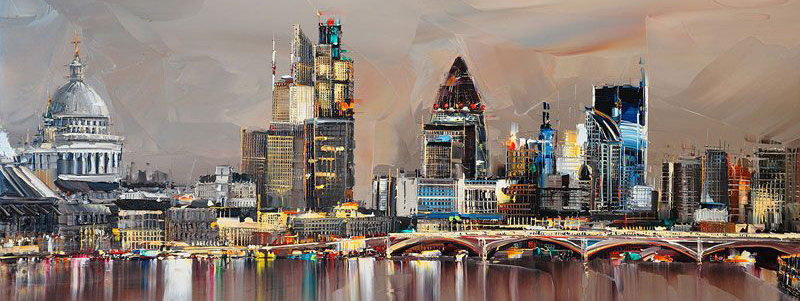Kensington - Chelsea
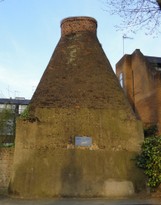 Notting Hill is a central neighbourhood in London. The name "Gate" is owed to the fact that in order to travel along the street, it was once necessary to pay a toll. The earth under Notting Hill has always been full of clay, and because of this, especially in the area west of Pottery Lane, a number of crockery industries sprung up. The bricks and tiles for constructions were cooked in great kilns. In Walmer Road, there is a surviving one, shaped like a trullo, built completely in dark bricks.
Notting Hill is a central neighbourhood in London. The name "Gate" is owed to the fact that in order to travel along the street, it was once necessary to pay a toll. The earth under Notting Hill has always been full of clay, and because of this, especially in the area west of Pottery Lane, a number of crockery industries sprung up. The bricks and tiles for constructions were cooked in great kilns. In Walmer Road, there is a surviving one, shaped like a trullo, built completely in dark bricks. The two most famous attractions of Notting Hill are the market of Portobello Road and the Caribbean Carnival.

The market occupies the length of the street which gives it its name, derived from the town of Puerto Bello, in what is now the state known as Panama, which had been taken from the Spanish by admiral Vernon. There are antique items (especially on Saturdays) and second-hand ones, clothing, and fruit and vegetables. The street has a lively and cosmopolitan atmosphere about it. The carnival, instead, takes place in August and lasts two days, one Saturday and one Sunday. It started in 1964, and still attracts millions of people: the most represented are the communities of Trinidad and Tobago.
It is an extremely colourful celebration of the multicultural nature of this city: men dressed in enormous plumage, women wearing gigantic butterfly wings, and children with a variety of costumes and get ups. The music makes one feel quite merry, and it is a bit like being in Rio.
A gastronomic walk around Portobello Road and surrounding area - We can start with a good espresso at the Electric Diner in 191, Portobello Road, where there is an outside area for sitting and, if one so desires, eating a delicious breakfast whilst reading a newspaper... In case one prefers a take away, one can head over to Mr Christian's Delicatessen & Wines, at number 11 of Elgin Crescent, where there is a large variety of cheeses, cured meats, hams, quiches, tarts, sandwiches, and many types of baked bread, still piping hot from the oven. Another Deli is Tom's, at number 127, Westbourne Grove. If one wishes to buy something to take away, such as sandwiches, quiches, traditional biscuits, smoked ham, one must go down to the basement, which is an absolute treat for the eyes. One can sit down and have breakfast or lunch.
MUSEUM OF BRANDS, PACKAGING, AND ADVERTISING
1, COLVILLE MEWS
UNDERGROUND: NOTTING HILL GATE
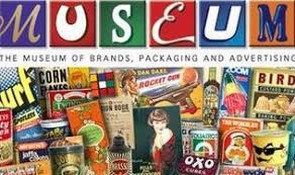 Almost at the corner with Lonsdale Road, upon a small cobbled road stands this extremely colourful museum, which was set up quite recently, and tells of the history and changes in everyday life through objects that have been a part of it. It is called the Museum of Brands, Packaging, and Advertising, and illustrates the history of consumerism going from the Victorian age all the way up to the present day.
Almost at the corner with Lonsdale Road, upon a small cobbled road stands this extremely colourful museum, which was set up quite recently, and tells of the history and changes in everyday life through objects that have been a part of it. It is called the Museum of Brands, Packaging, and Advertising, and illustrates the history of consumerism going from the Victorian age all the way up to the present day. There are brands on show which no longer exist, but were extremely well-known and popular in the past, products of everyday life, vividly coloured containers which once contained famous detergents, imaginative chocolate wrapping, and powder for making puddings, tender images on the packaging of beauty cream products...
In products ranging from the Fifties onwards, plastic and synthetic materials start to appear. The products of the past have a certain naivety in their presentation, which is unknown to the sophisticated dimension of today. A kaleidoscope of images and objects which reflect the changes in shopping habits, a revolution in consume caused by the new systems of transportation, which causes people to consume products from countries which are ever more distant, changes in lifestyle owing to women's emancipation, as the role changes from that of a housewife to that of a worker inserted in society: a story of customs and habits told through twelve thousand items.
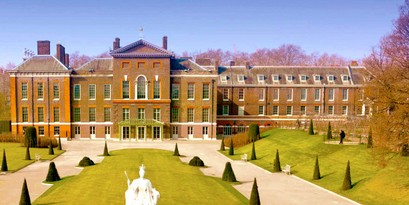 Kensington was declared a royal district in 1901, by order of Queen Victoria, who was born in Kensington Palace, in Palace Avenue. The Latin name by which the area is mentioned for the first time, in 1086, is Chenesitone. Its territory belonged to Abingdon Abbey. Today, within its boundaries there are many important buildings and quaint cottages, recovered from the antique stables. It is a zone which is very rich with greenery, what with Holland Park and Kensington Gardens. There are also various squares with gardens in the centre, such as Edwardes Square, Earls Terrace, and Wycombe Square.
Kensington was declared a royal district in 1901, by order of Queen Victoria, who was born in Kensington Palace, in Palace Avenue. The Latin name by which the area is mentioned for the first time, in 1086, is Chenesitone. Its territory belonged to Abingdon Abbey. Today, within its boundaries there are many important buildings and quaint cottages, recovered from the antique stables. It is a zone which is very rich with greenery, what with Holland Park and Kensington Gardens. There are also various squares with gardens in the centre, such as Edwardes Square, Earls Terrace, and Wycombe Square. However, for most people this is known for being the area of museums in South Kensington, built on land that prince Albert had acquired in order to build a group of institutions aimed at "extending the influence of science and art on industry".
The extremely crowded Kensington High Street, instead, full of elegant shop windows, is the beating heart of the commercial zone.
There are some squares such as Cadogan Square, in Knightsbridge, which are flanked by buildings dating back to the end of the Nineteenth Century, with some wonderful details. They have been partly designed by George Devey. If one goes to walk there in the evening and looks at the insides of the buildings, one can see some majestic halls and wonderful plastered ceilings.
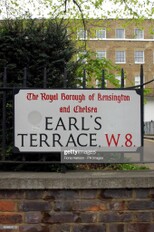 The French Kensington - In Kensington there is a strong French presence, which is made evident by the Lycée Charles De Gaulle, by the French Institute for Culture, by the presence of a cinema with films in the original language, a library, and some French cafés. Amongst the famous people who have lived here, is the scientist Francis Galton, an inventor, researcher in eugenics and explorer, as well as the author of the survival manual The Art of Travel.
The French Kensington - In Kensington there is a strong French presence, which is made evident by the Lycée Charles De Gaulle, by the French Institute for Culture, by the presence of a cinema with films in the original language, a library, and some French cafés. Amongst the famous people who have lived here, is the scientist Francis Galton, an inventor, researcher in eugenics and explorer, as well as the author of the survival manual The Art of Travel.In Gloucester Road stands the church of St Stephen, built in 1865, following the design by Joseph Peacock and more or less unchanged since then. A marble tombstone reminds us of the great poet Thomas Steams Eliot, who was born in St Louis in Missouri, but who always lived here, and was the secular assistant of this church for twenty-five years, until 1959.
The engraving invites one to pray for his soul. Eliot states that he had come here for the first time in 1933 and that he was hosted in the small room of the presbytery for the first months of his stay. His poem The Waste Land depicts the modern western world, marred by the crisis and the fruitlessness, as if nearing the end of its path. After having read it, one can no longer see the capital with the same eyes.
ROYAL GEOGRAPHICAL SOCIETY
1, KENSINGTON GORE
UNDERGROUND: SOUTH KENSINGTON
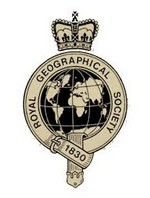 Since 1912, the Lowter Lodge hosts the headquarters of the Society founded in 1830 by John Barrow, Francis Beaufort, and John Franklin, with the name Geographical Society of London. The institution had the aim of promoting progress in geographical science, under the patronage of King William IV.
Since 1912, the Lowter Lodge hosts the headquarters of the Society founded in 1830 by John Barrow, Francis Beaufort, and John Franklin, with the name Geographical Society of London. The institution had the aim of promoting progress in geographical science, under the patronage of King William IV.The organization provided support and funding to various scientists and explorers, such as Charles Darwin, David Livingstone, Robert Falcon Scott, Richard Francis Burton, John Hanning Speke, Henry Morton Stanley, Ernest Shackelton, Edmund Hillary, and Wilfred Patrick Thesiger. From halfway through the Nineteenth Century until the end of the First World War, reports of exploration expeditions were often published on the cover of newspapers, and the opinions of the president and the members of the board were jealously fought over by reporters.
Today the society, which includes fifteen thousand members, is an important centre for geographical studies, and supports the teaching of students and the dissemination of geographical knowledge amongst adults. It takes care of the publication of texts in the field and also of a monthly issue, which contains articles on the environment and travelling. It also supports a number of expeditions, and field research, as well as organizing conferences.
The society has a splendid collection of maps. In the niches of the walls, there are some bronze statues of Livingstone, and Shackleton, by Huxley-Jones and Charles Sargeant Jagger. The museum preserves the relics connected with their companies, and one of these is the diary of John Hunt's expedition to Mount Everest.
The statue of Livingstone - In front of the building of the Geographical Society in Kensington Gore, there is a statue of the explorer Livingstone. The Scottish missionary is famous for his expeditions to Africa, during which he explored the Victoria Falls, Lake Ngami, Malawi, and some parts of Zambesi, in search of the source of the Nile.
During his fourth and last expedition, he had the famous encounter with Henry Stanley, who had been sent to look for him by the members of the Geographical Society, who were worried by his five-year absence. The two met on the edge of Lake Ujiji, where Stanley pronounced the famous phrase: "Dr. Livingstone, I presume?"After teaming up for a short while, Stanley returned to London, and Livingstone remained in Africa, where he died two years later. His heart is buried in Ulala, Zambia, beneath an mpundu tree. His body was instead transported to England. After having been identified, through the examination of his bones, deformed and mangled by a lion, he was buried in the Westminster Abbey, under a tombstone upon which his merits have been listed.
ROYAL ALBERT HALL
KENSINGTON GORE
UNDERGROUND: SOUTH KENSINGTON
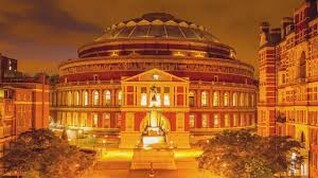 The elliptical cylinder covered by a roof of glass and iron, decorated by a frieze which represents the triumph of the Arts and Sciences of the Albert Hall, which was designed by captain Fawke and Henry Scott. The roof above the gallery contained tanks of water, which were supposed to empty their content onto the theatre in the case of a fire.
The elliptical cylinder covered by a roof of glass and iron, decorated by a frieze which represents the triumph of the Arts and Sciences of the Albert Hall, which was designed by captain Fawke and Henry Scott. The roof above the gallery contained tanks of water, which were supposed to empty their content onto the theatre in the case of a fire. It was opened in May 1871, and was supposed to be part of Albertopolis, the group of museums and institutions built south of Kensington Gardens. It can host up to eight thousand people, and shows of all types are held there, but the most important event is that of the Promenade Concerts, or Proms. The latter were founded in 1895 by Henry Wood and recur each summer, with enormous success.
THE CHIMNEY STACK OF THE ROYAL ALBERT HALL
KENSINGTON GORE
UNDERGROUND: SOUTH KENSINGTON
(EXIT OF THE SCIENCE MUSEUM)
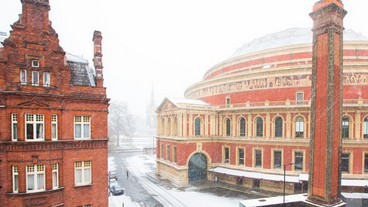 Along the least visible side of the building, an incredibly high chimney stack stands out. One can observe it after ascending the steps of Prince Consort Road and heading left. The chimney, isolated on the pavement, is located here. It was once a vital part of the building, as the Hall needed warming and this was the tube of the boiler, placed directly above the furnaces. The boilers provided hot water to the radiators and the steam that was developed could power two engines, which in turn would move the bellows of the great organ. A report from that period states that the instrument had as many as ten thousand reeds, one hundred and thirty registers, five keyboards, and a range of ten octaves. Perhaps this is somewhat an exaggeration.
Along the least visible side of the building, an incredibly high chimney stack stands out. One can observe it after ascending the steps of Prince Consort Road and heading left. The chimney, isolated on the pavement, is located here. It was once a vital part of the building, as the Hall needed warming and this was the tube of the boiler, placed directly above the furnaces. The boilers provided hot water to the radiators and the steam that was developed could power two engines, which in turn would move the bellows of the great organ. A report from that period states that the instrument had as many as ten thousand reeds, one hundred and thirty registers, five keyboards, and a range of ten octaves. Perhaps this is somewhat an exaggeration.STATUE OF PETER PAN SPEKE AND JENNER
KENSINGTON GARDENS
UNDERGROUND: SOUTH KENSINGTON
In Kensington Park, just a short while south from the Italian Gardens, there are three famous statues. There is one portraying Peter Pan, the famous literary character created by James Barrie, in the act of playing the flute. There is a monument dedicated to John Hanning Speke, the Victorian explorer who conducted three journeys to Africa in search of the source of the Nile, alongside Richard Burton. The monument, an obelisk of grey granite, is a reminder that Speke had the merit of having got closer to that objective than any other contemporary character of his time.
Lastly we find the statue of Edward Jenner, the medic who discovered the vaccine for smallpox. He succeeded after noticing that the workers assigned to cow milking, in particular the female workers, as the staff was made up for the most part of women, did not contract this illness. On 14th May 1796, the medic injected James Phipps with the vaccine. At first, Jenner had encountered great resistance from the official establishment, yet the results proved him right eventually. It is believed that Jenner also invented the word "vaccine", which he had derived from the Latin word vacca, meaning "cow". The name was then made even more popular and generalized by Louis Pasteur.
HOLLAND PARK
HOLLAND PARK AVENUE
UNDERGROUND: HOLLAND PARK
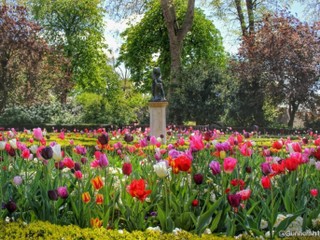 The entire area around Holland Park is rich with Victorian houses. The northern part of the park is woody; in the part around Holland House, instead, there are gardens, with many flowerbeds and peacocks roaming about in the middle of it. In the western part of the park, stands the temporary structure of the theatre, arranged in such a way that the ruins of Holland House are at the back. In July and August the opera takes place here, and the natural setting gives these shows a magical atmosphere. Some of the most popular shows are Carmen, Don Giovanni, Fidelio, The Strength of Destiny, and Francesca da Rimini.
The entire area around Holland Park is rich with Victorian houses. The northern part of the park is woody; in the part around Holland House, instead, there are gardens, with many flowerbeds and peacocks roaming about in the middle of it. In the western part of the park, stands the temporary structure of the theatre, arranged in such a way that the ruins of Holland House are at the back. In July and August the opera takes place here, and the natural setting gives these shows a magical atmosphere. Some of the most popular shows are Carmen, Don Giovanni, Fidelio, The Strength of Destiny, and Francesca da Rimini. In the north-eastern corner, there is a small Japanese garden, with a small waterfall, a little bridge, some clematis and flowering shrubs, enclosed within a wall made of rocks imported from Japan.
There is also a Dutch garden which was designed in 1812 by Bonaiuti and Orangerie; the gate pillars were sculpted in 1629, following the design of Inigo Jones. Holland House was built in 1607 for Walter Cope, whose daughter had married the first duke of Holland. In the Nineteenth Century, the third duke of Holland hosted guests such as Talleyrand and Ugo Foscolo. The building was destroyed by the bombing during the Second World War, and now only fragments remain of the original construction, which has been reconstructed and repurposed as a youth hostel. Comedies and ballets are also performed in the pavilion which also serves as a restaurant. Sculpture exhibitions can be witnessed in the park. One can also go for a very pleasant stroll along Holland Walk.
LEIGHTON HOUSE
12, HOLLAND PARK ROAD
UNDERGROUND: HIGH STREET KENSINGTON, HOLLAND PARK
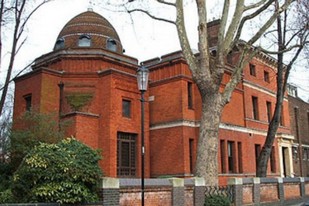 The house was once home to the painter Frederic Leighton, president of the Royal Academy, also given the title of Lord one month before his death. In 1855, his first painting to be exhibited at the academy, Cimabue's Celebrated Madonna Carried in Procession through the Streets of Florence, was purchased for six hundred pounds by Queen Victoria. However, the painting that actually made him rich was Dante in exile, in 1864. Starting on that date, and over the following fifteen years, Leighton dedicated himself to the construction of this house, built in red Suffolk bricks, with the assistance of the architect George Aitchison. The painter wanted to have a study full of light and a place where he could have his friends over. The entrance has a black and white mosaic flooring and a dark ebony staircase. The most important room, the Arab Hall, sits on the ground floor, and is based on a room in the Zisa castle in Palermo. It is a very unusual hall, with a fountain right at the centre of it, and walls covered with ancient blue and green tiles, which come from Damascus, Cairo, and Rhodes. The engravings and the coloured windows complete the oriental motif.
The house was once home to the painter Frederic Leighton, president of the Royal Academy, also given the title of Lord one month before his death. In 1855, his first painting to be exhibited at the academy, Cimabue's Celebrated Madonna Carried in Procession through the Streets of Florence, was purchased for six hundred pounds by Queen Victoria. However, the painting that actually made him rich was Dante in exile, in 1864. Starting on that date, and over the following fifteen years, Leighton dedicated himself to the construction of this house, built in red Suffolk bricks, with the assistance of the architect George Aitchison. The painter wanted to have a study full of light and a place where he could have his friends over. The entrance has a black and white mosaic flooring and a dark ebony staircase. The most important room, the Arab Hall, sits on the ground floor, and is based on a room in the Zisa castle in Palermo. It is a very unusual hall, with a fountain right at the centre of it, and walls covered with ancient blue and green tiles, which come from Damascus, Cairo, and Rhodes. The engravings and the coloured windows complete the oriental motif. However, although this area is the main attraction of the house, the latter is nonetheless riddled with other very original details: the frieze of Walter Crane for example, inspired by those of Ancient Greece, or the red walls decorated with black carved wood, which imitate the Venetian palazzi. Leighton lived and worked here for thirty odd years, completely dedicated to his work and social life. The house, which was partly an art gallery and a sales point (one must consider that at the time, artists did not paint in order to exhibit their work in museums but instead worked only for private collectors) became a museum in memory of the painter after his death, with paintings by Burne-Jones, Albert Moore, and George F.Watts, collected by Leighton himself.
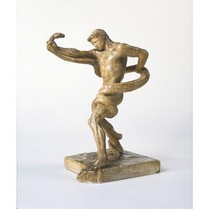 Also preserved are the statuettes of the Italian Renaissance, bas-reliefs, bowls and vases of Chinese bronze, terracotta items by William de Morgan, furniture from Eighteenth-century Holland, beautiful Persian rugs and others for prayer, as well as English and Turkish silverware, which contributes to giving the house its oriental appeal. The gallery hosts some paintings by Leighton's contemporary fellow artists, such as Shelling Peas by J.E. Millais, and the area is illuminated via the ceiling.
Also preserved are the statuettes of the Italian Renaissance, bas-reliefs, bowls and vases of Chinese bronze, terracotta items by William de Morgan, furniture from Eighteenth-century Holland, beautiful Persian rugs and others for prayer, as well as English and Turkish silverware, which contributes to giving the house its oriental appeal. The gallery hosts some paintings by Leighton's contemporary fellow artists, such as Shelling Peas by J.E. Millais, and the area is illuminated via the ceiling.SCIENCE MUSEUM: FROM THE MINES TO THE MOON
EXHIBITION ROAD
UNDERGROUND: SOUTH KENSINGTON
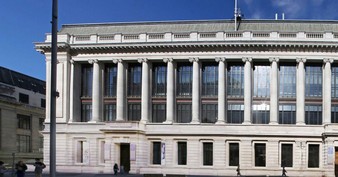 The Science Museum is a labyrinth-like building, designed by Richard Allison in 1914.
The Science Museum is a labyrinth-like building, designed by Richard Allison in 1914. In the hall we can admire the busts of Newton and Einstein. The latter is a bronze work, carried out by Epstein, which appears to be brimming with energy. On the left, near the staircase, there is a pendulum which belonged to Foucault. On the inside there are a series of wings, each dedicated to a more or less recent invention which changed the world.
The ground floor is dedicated to engines and the development of means of transport. There is a reconstruction of Watt’s laboratory, brought here from his house in Staffordshire. Also present, is the oldest locomotive, dating back to 1813, and Stevenson’s Rocket from 1828, some beautiful cars, such as an 1888 Benz, and a million-volt impulse generator which is activated twice a day, which makes a thunderous clap that can be heard from outside. One can visit an area on the subject of work in the mines, with an operating shaft built to scale.
On the first floor there are some utensils and machinery. The museum also holds the original mechanism for the Well Cathedral clock, which is set in motion by counterweights. On the pavement there is a Star Dome, and every day there is a conference on astronomy.
On the second floor we can find sections covering photography, atomic physics, chemistry, and naval engineering; the life-size model of a ship’s deck, equipped with radar, is very popular and gets many visits.
On the third floor one can visit the section covering magnetism and electricity, with the impressive collection of scientific tools gathered by George III, including the masterpiece of the mechanical planetarium, built in 1733 by T. Wright. An entire gallery is dedicated to aeronautics, with a reconstruction of the fragile aircraft that the Wright brothers used for their first engine-powered flight in 1903. The command module of the Apollo 10 dates back to a few decades later, and is exhibited in the space centre.
NATURAL HISTORY MUSEUM
CROMWELL ROAD
UNDERGROUND: SOUTH KENSINGTON
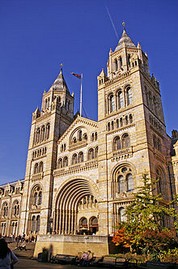 The building of the Museum of Natural History planned by Waterhouse somewhat resembles a cathedral, with a facade in red and blue terracotta and an extremely high ceiling. A gigantic tyrannosaurus stands in the entrance. All the available space is sculpted with animals and plants. In the western wing, one can find the extinct species, whereas the eastern one is that of creatures still alive on the planet today. The first collection of the museum was that donated by Hans Sloane. Today the museum, which stands at the corner with Exhibition Road, is divided into five departments: zoology, entomology, palaeontology, mineralogy, and botany. There are often exhibitions, as was the case on occasion of Darwin’s two hundredth anniversary, when millions of insect and plant species were exhibited. The building also hosts some laboratories used by researchers, but also open to the public. One may for example explore the latest discoveries about the environment and attend demonstrations by the experts.
The building of the Museum of Natural History planned by Waterhouse somewhat resembles a cathedral, with a facade in red and blue terracotta and an extremely high ceiling. A gigantic tyrannosaurus stands in the entrance. All the available space is sculpted with animals and plants. In the western wing, one can find the extinct species, whereas the eastern one is that of creatures still alive on the planet today. The first collection of the museum was that donated by Hans Sloane. Today the museum, which stands at the corner with Exhibition Road, is divided into five departments: zoology, entomology, palaeontology, mineralogy, and botany. There are often exhibitions, as was the case on occasion of Darwin’s two hundredth anniversary, when millions of insect and plant species were exhibited. The building also hosts some laboratories used by researchers, but also open to the public. One may for example explore the latest discoveries about the environment and attend demonstrations by the experts. At the Geological Museum, which has been adjoined to the Natural History Museum since 1985, there are thousands of minerals on show, as well as collections of precious stones, such as diamond, ruby, emerald, sapphire, and also semi-precious ones like opal, agate, onyx, and chalcedony. On the first floor there are some fossils found in Great Britain, whilst on the second floor we find, amongst other things, some materials used for building houses in London
VICTORIA & ALBERT MUSEUM
CROMWELL ROAD
UNDERGROUND: SOUTH KENSINGTON
The museum, hosted in the building with a terracotta facade, which is particularly attractive at night thanks to the superb lighting and an octagonal dome on the roof, was opened by King Edward VII in 1909. Since then, the collections have grown richer and richer with new specimens, ranging from medieval to gothic, renaissance, Indian, and Islamic art… There are many miniatures and water or oil paintings, such as those by John Constable.
Raphael’s cartoons – There are seven great preparatory sketches that Raphael carried out for Pope Leo X in 1515, which were supposed to be used for tapestries. 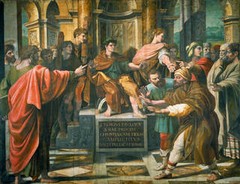 The weavers of Brussels, for the sake of ease, had cut them into smaller pieces. Amongst the sculptures, there is a wax model of Michelangelo called The slave, which was meant to be used as one of the figures on the tomb of Julius II. There are some groups of statues by Giovanni Bologna, the magnificent Neptune by Bernini, the moving Ascension sculpted in bas-relief by Donatello, along with other sculptures from the Italian Renaissance.
The weavers of Brussels, for the sake of ease, had cut them into smaller pieces. Amongst the sculptures, there is a wax model of Michelangelo called The slave, which was meant to be used as one of the figures on the tomb of Julius II. There are some groups of statues by Giovanni Bologna, the magnificent Neptune by Bernini, the moving Ascension sculpted in bas-relief by Donatello, along with other sculptures from the Italian Renaissance.
 The weavers of Brussels, for the sake of ease, had cut them into smaller pieces. Amongst the sculptures, there is a wax model of Michelangelo called The slave, which was meant to be used as one of the figures on the tomb of Julius II. There are some groups of statues by Giovanni Bologna, the magnificent Neptune by Bernini, the moving Ascension sculpted in bas-relief by Donatello, along with other sculptures from the Italian Renaissance.
The weavers of Brussels, for the sake of ease, had cut them into smaller pieces. Amongst the sculptures, there is a wax model of Michelangelo called The slave, which was meant to be used as one of the figures on the tomb of Julius II. There are some groups of statues by Giovanni Bologna, the magnificent Neptune by Bernini, the moving Ascension sculpted in bas-relief by Donatello, along with other sculptures from the Italian Renaissance.In the collection of costumes, there are many elegant items of clothing, which go from the early Seventeenth Century to present. There is also a Music Room, which comes from Norfolk House, and a Theatre Room, as well as many others, each with its own speciality, be it artistic glasswork, pottery, Asian craftsmanship, medieval tapestries, modern designs and fabrics, or contemporary photography… The museum also hosts the National Library of Art, which can be accessed only by means of a written request. A special wing was built in 1982 to host temporary exhibitions of industrial and applied art. There are conferences on each and every aspect of Art, and in the nearby garden there are parties every Friday evening.
The pleasant area of the Pirelli Garden is both an expository place and also one for meeting people.
HARRODS
87-135 BROMPTON ROAD
UNDERGROUND: ST JAMES’S PARK
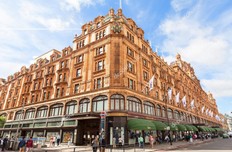 Harrods was opened in 1849, but the current building was built in 1905. One simply cannot leave London without at least having visited its Food Hall. Upon the background provided by the beautiful Art Nouveau tiles on the walls in the gastronomy department there are windows filled with culinary delicacies of every type one could possibly imagine. This is even more the case during the Christmas period, when one can find a delicious Christmas Pudding drenched in the finest Scotch whiskey, all sorts of stuffed pies, salmon, and other sumptuous delights.
Harrods was opened in 1849, but the current building was built in 1905. One simply cannot leave London without at least having visited its Food Hall. Upon the background provided by the beautiful Art Nouveau tiles on the walls in the gastronomy department there are windows filled with culinary delicacies of every type one could possibly imagine. This is even more the case during the Christmas period, when one can find a delicious Christmas Pudding drenched in the finest Scotch whiskey, all sorts of stuffed pies, salmon, and other sumptuous delights.A grotto has been made where children can meet Father Christmas and ask him for a toy they desire, ranging from old rocking horses or traditional Maxwell to the most modern and sophisticated of toys. The traditional Christmas crackers, cardboard cylinders covered in colourful paper which explode when being tugged hard enough on both ends, have a small banger inside which is set off, as well as containing not just a gimmicky trinket and joke like most crackers, but usually an expensive present placed inside by order of the customer. There is also a great choice as far as tea and coffee is concerned, and the same goes for jam and marmalade, sauces, and wine. There are a number of different restaurants.
CHELSEA OLD CHURCH
64 CHEYNE WALK
UNDERGROUND: SLOANE SQUARE
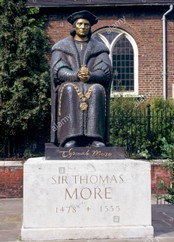 The statue of Thomas More – Outside the church there is a statue of Thomas More, carried out by L.Cubitt Bevis in 1969. More was executed on April 15th 1534 for having refused to give Henry VIII his approval for divorce and renewed marriage. The headless body was buried in the church of St. Peter in Chains inside the tower.
The statue of Thomas More – Outside the church there is a statue of Thomas More, carried out by L.Cubitt Bevis in 1969. More was executed on April 15th 1534 for having refused to give Henry VIII his approval for divorce and renewed marriage. The headless body was buried in the church of St. Peter in Chains inside the tower. 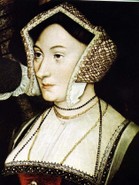 The head was instead exhibited on the London Bridge, impaled on a stake, next to the heads of other men considered traitors. Birds flocked to peck away at the flesh, leaving only the skull. One of More’s daughters, Margaret Roper, who could no longer bear to see her father’s head exposed to such scorn, set off one night and headed beneath the bridge with her boat rowed by an accomplice. The man removed the skull and tossed it to her. She placed it in a sack and headed for Canterbury, to St Dunstan’s church, where she deposited it in the tomb belonging to her husband’s family.
The head was instead exhibited on the London Bridge, impaled on a stake, next to the heads of other men considered traitors. Birds flocked to peck away at the flesh, leaving only the skull. One of More’s daughters, Margaret Roper, who could no longer bear to see her father’s head exposed to such scorn, set off one night and headed beneath the bridge with her boat rowed by an accomplice. The man removed the skull and tossed it to her. She placed it in a sack and headed for Canterbury, to St Dunstan’s church, where she deposited it in the tomb belonging to her husband’s family.CHEYNE WALK
UNDERGROUND: FULHAM BROADWAY
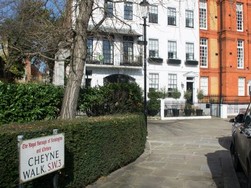 This is the most literary street in the capital. Dante Gabriel Rossetti once lived at number 16, together with the poet Algernon Swinburne. In the garden there is a fountain in his memory, designed by Sedding. At number 93, Elizabeth Gaskell was born, also known as “the Dickens woman”.
This is the most literary street in the capital. Dante Gabriel Rossetti once lived at number 16, together with the poet Algernon Swinburne. In the garden there is a fountain in his memory, designed by Sedding. At number 93, Elizabeth Gaskell was born, also known as “the Dickens woman”. Number 4 was instead the home of Mary Ann Evans, better known as George Eliot, and of her lover John Cross, who attempted suicide during their honeymoon in Venice.
Eliot had come back to live here during the last years of her life. The most important passages of her last novel, Daniel Deronda, in 1876, are set in Chelsea. At the western end, Turner’s house was built, and the new building still goes by his name. The Brunel engineers, father and son, lived in number 98, in a Seventeenth Century house.
PHYSIC GARDEN
66 ROYAL HOSPITAL ROAD
UNDERGROUND: VICTORIA, SLOANE SQUARE
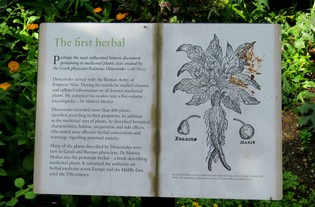 Those who love the art of planting cannot pass up on coming to this garden of medicinal herbs, which has the advantage of being very central. Having been created in 1673, it is of historical (as well as aesthetic) interest. The rock garden, created with lava imported from Iceland, is extraordinarily beautiful. This hidden spot, with its melancholy beauty, is west of Chelsea Embankment. At first, almost three hundred and fifty years ago, it was property of the Worshipful Society of Apothecaries: the name “physic”, in fact, refers to the science of curing and healing, and the plants were used for this purpose. Some of the more interesting plants found here are for example the lichens, which usually grow on trees.
Those who love the art of planting cannot pass up on coming to this garden of medicinal herbs, which has the advantage of being very central. Having been created in 1673, it is of historical (as well as aesthetic) interest. The rock garden, created with lava imported from Iceland, is extraordinarily beautiful. This hidden spot, with its melancholy beauty, is west of Chelsea Embankment. At first, almost three hundred and fifty years ago, it was property of the Worshipful Society of Apothecaries: the name “physic”, in fact, refers to the science of curing and healing, and the plants were used for this purpose. Some of the more interesting plants found here are for example the lichens, which usually grow on trees. Here, they have been planted in terracotta urns, and there are around forty different species present. The most bizarre of theses is chewing gum lichen. The most useful, on the other hand, is the Lecanora muralis, because it is an indicator of air pollution. Tropical plants are cultivated in the greenhouses. At the centre of the plot of land is the statue of Hans Sloane, who had given up the land almost for free. It was from here that cotton seeds were sent to the United States, which later led to the growth of plantations in the country. Nowadays, researchers continue their analyses on the properties, origins, and methods of preservation for over five thousand species of plants, which come from all over the world. The organized Christmas party is really quite something.
In the Mediterranean woodland area, there are a number of hives, and the honey which is gathered is then sold in the shop.
A pleasant way to conclude the visit is to go the café for a muffin and a slice of homemade cake, along with a nice cup of tea. Alternatively, in Duke of York’s Square, we can find Patisserie Valerie, which has delicious tarts and coffee.
ROYAL HOSPITAL
ROYAL HOSPITAL ROAD
UNDERGROUND: SLOANE SQUARE
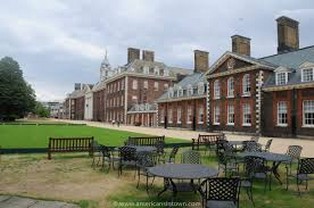 The Royal Hospital was founded in 1682 by Charles II, as an imitation of the Hotel des Invalides ordered by Louis XIV in Paris for aging soldiers. The architect was Christopher Wren, who designed the buildings which stand on the edge of three courtyards. There are also arcades, where the elderly can sit down to observe the passers-by and the Thames. The steps leading up to the first floor have a very low rise, as Wren was fussy to never forget such practical details. The mantelpiece in the Council Chamber is filled with military trophies. On the wall, there is a portrait of Charles II and Caterina of Braganza carried out by Van Dyck. The half dome of the chapel’s apse was painted by Sebastiano Ricci and his nephew Marco. The fresco portrays the Resurrection of Christ.
The Royal Hospital was founded in 1682 by Charles II, as an imitation of the Hotel des Invalides ordered by Louis XIV in Paris for aging soldiers. The architect was Christopher Wren, who designed the buildings which stand on the edge of three courtyards. There are also arcades, where the elderly can sit down to observe the passers-by and the Thames. The steps leading up to the first floor have a very low rise, as Wren was fussy to never forget such practical details. The mantelpiece in the Council Chamber is filled with military trophies. On the wall, there is a portrait of Charles II and Caterina of Braganza carried out by Van Dyck. The half dome of the chapel’s apse was painted by Sebastiano Ricci and his nephew Marco. The fresco portrays the Resurrection of Christ. In the morning, when mass takes place, the pensioners appear from their single rooms, wearing a red uniform and a tricorne hat. They then dine in the great hall, where they are served before the officers, as a sign of respect for the services they provided in the past. With their red coats, the in-pensioners act as guides for the museum, which is rich with historical objects, medals, uniforms, and paintings which depict famous battles of the past. Parades take place on the aptly named Parade Ground, and there is even a sergeant major barking orders, as well as a governor who performs inspections.
The great wall painting in the hall was initiated by Verrio and completed by Cooke, and portrays Charles II on horseback, surrounded by allegorical figures.
SLOANE SQUARE
UNDERGROUND: SLOANE SQUARE
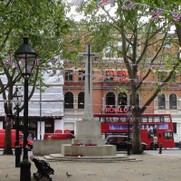 It is quite likely that most of the many people who cross this famous and busy square every day, do not know that Dr Sloane, born in 1660, to whom the square is dedicated, is the man who is said to have invented the drink consisting of milk-based hot chocolate in a mug. Sloane was a researcher in the field of botany, and had travelled around France and Jamaica, in search of new plants. In the latter country, he had witnessed the native populations preparing a beverage based on chocolate powder and hot water.
It is quite likely that most of the many people who cross this famous and busy square every day, do not know that Dr Sloane, born in 1660, to whom the square is dedicated, is the man who is said to have invented the drink consisting of milk-based hot chocolate in a mug. Sloane was a researcher in the field of botany, and had travelled around France and Jamaica, in search of new plants. In the latter country, he had witnessed the native populations preparing a beverage based on chocolate powder and hot water. He had decided to improve the taste of the drink by replacing the hot water with milk, and once he returned to his homeland, he started to spread it as a type of medicine. Later on, in the Nineteenth Century, the Cadbury brothers, owners of the great chocolate factory, took ownership of Sloane’s patent and started selling the tasty liquid in cans.
